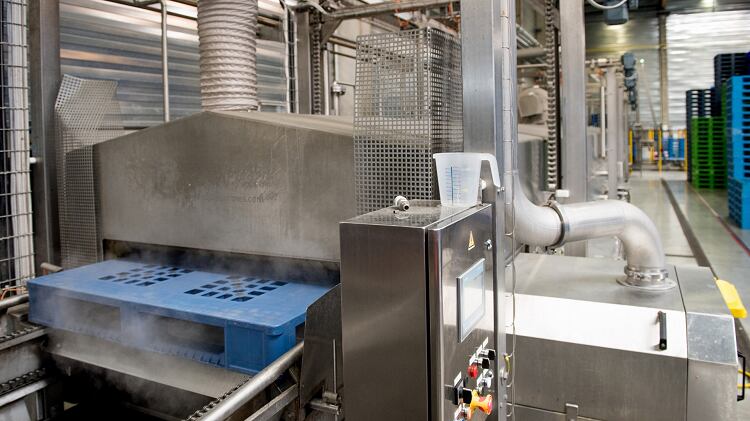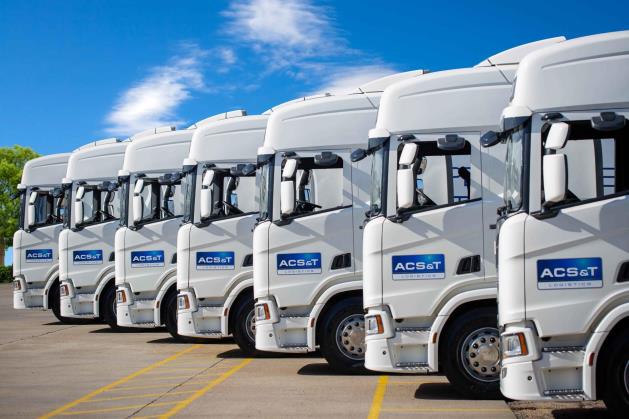While more obvious costs – such as the initial acquisition, maintenance and disposal – are often factored into the purchasing or renting pallets, expenses associated with the entire lifecycle of pallets can be overlooked.
Factors such as storage costs, insurance against loss and damage, lifecycle durability and customisation need to be considered in the total cost of ownership, according to reusable plastic packaging and pallet supplier Tosca.
Supply chain and warehouse managers could also end up having to buy twice if the type of pallet they acquire is not fit for their systems. For example, not all pallets are compatible with automated systems such as robotic arms and conveyor systems, or may not be suitable for food production for hygiene reasons.
Damage, costs and lost time
Both result in loads being transferred to other food-grade carriers which can lead to product damage, higher labour costs and lost time.
“Our goal with this report is to bring to light the true cost of pallet ownership that many businesses overlook,” said Erik Marinissen, Tosca’s sales director for DACH and Benelux. “By identifying these hidden costs, we can proactively help businesses make more informed decisions about their supply chain operations and encourage a move towards more sustainable practices.”
Tosca set out strategies to help mitigate the total cost of ownership for pallets, from identifying the best type of pallets for your business needs, to implementing an efficient pallet management system – see box below for more.
Reusable pallets
Reusable pallets were the solution to many of the lifecycle problems presented with owning pallets, offering ‘several advantages’ over their wooden counterparts.
Besides their longevity and more sustainable production, these types of pallets often come with tracking systems such as RFID tags or barcodes, making them easier to manage and locate within the supply chain.
"We're proud to offer a solution that not only saves businesses money but also contributes to environmental sustainability," added Tosca's EMEA President, Dan Lee. "We believe that our reusable pallets are a game-changer for any business using pallets in their supply chain."
Meanwhile, Dan Migliozzi, head of sales at independent systems integrator Invar Group, considers the pros and cons of both a complete and phased approach to automating the warehouse.
Strategies to Mitigate your pallet Total Cost of Ownership

Start with identifying the best type of pallet type for your specific needs.
This is the upfront cost of purchasing or acquiring pallets and can include the price of new pallets, used pallets, or rental fees if applicable. New designs and materials, such as plastic or composite pallets, may offer longer lifespans and lower maintenance costs but can have higher initial acquisition costs.
Quality is crucial.
This can include anything and everything, from Invest in high-quality pallets that are less likely to break, splinter, or require frequent repairs. Well-maintained pallets can last longer, reducing replacement costs.
Implement an efficient pallet management system.
This can include anything and everything, from Invest in high-quality pallets that are less likely to break, splinter, or require frequent repairs. Well-maintained pallets can last longer, reducing replacement costs.
Consider the value of technology.
Intuitive pallet software such as Tosca’s Pool-It provides an easy and efficient way to track shipments and always be on top of your assets.
Regularly inspect pallets for damage and wear.
Remove damaged or unsafe pallets from circulation to prevent accidents and reduce replacement costs.
Establish a pallet recycling program where damaged pallets are repaired and reused or recycled.
Regular maintenance and repair can extend the lifespan of your pallets and reduce the need for replacements. Recycling is the more sustainable option.
Standardise pallet sizes and types to reduce complexity in your supply chain.
This can lower transportation, sorting and handling costs, as well as make it easier to source replacement pallets.
Invest in automated systems for pallet handling and storage.
If applicable, automation can reduce the risk of pallet damage during handling and improve overall efficiency but these systems require high quality pallets.
Build a strong partnership with pallet suppliers.
Whether renting or pooling, look for a partner who provides a consultancy approach as well as high levels of service and pricing transparency.
Maximise use of space in trucks and warehouses.
Efficient pallet stacking can reduce the number of trips required, saving on transportation costs. Choosing a reliable pooling partner also means used pallets will be collected regularly, reducing the number of pallets needing to be stored after use.
Decrease pallet partners.
By standardising your pallets, and decreasing the amount of “owners” of the empty pallets, you can significantly decrease the ramp-time for loading empty pallets. Cooperation with one pooling partner who collects all available empty pallets at once, will free up ramp time and decrease labour for loading the trucks.
Consider the environmental impact of your pallet choices.
Some industries are shifting toward more sustainable pallet materials, which may have long-term cost benefits and align with corporate sustainability goals.
Train employees on proper pallet handling techniques.
This will minimise damage and injury during loading, unloading, and storage.
Consider using pallet pooling services.
Leasing or renting pallets instead of purchasing them outright can reduce your upfront costs





